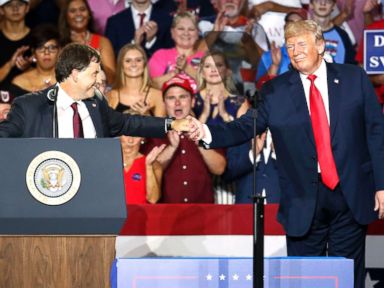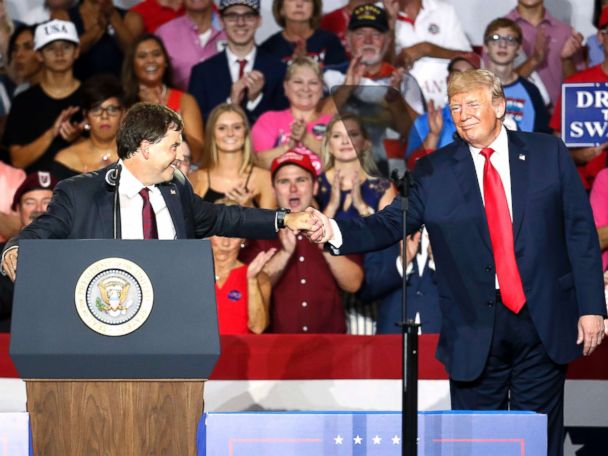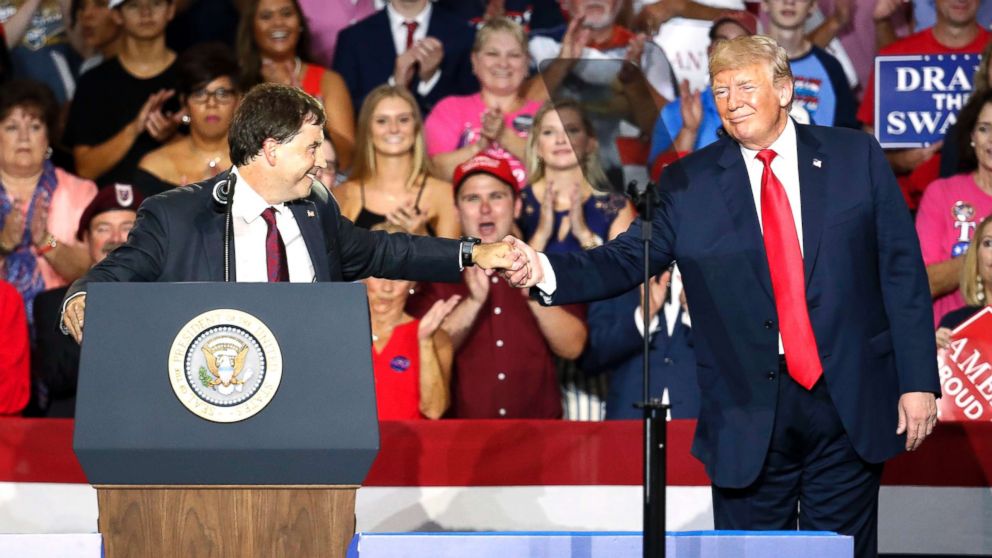






The way Danny O’Connor tells it, a run for the House of Representatives didn’t seriously cross his mind until this past January. Now, barely seven months later and amid a nationally restless political atmosphere, the 31-year-old Democrat is less than 24 hours away from potentially becoming the youngest member of Congress and further electrifying his party’s spirit three months ahead of the long anticipated midterm elections.
O’Connor faces off with Republican Troy Balderson Tuesday in a special election in Ohio’s 12th Congressional District to replace former GOP Rep. Pat Tiberi, who retired from the House at the start of the year. The district, a swath of the Buckeye State that extends from the well-to-do suburbs of Columbus to conservative rural areas to the north and east, was won by President Donald Trump by over 11 points in 2016, and portions of the region haven’t elected a Democratic congressperson since the early 1980s.
A legacy of Republican representation has far from deterred Democrats from attempting political flips of the longest odds this election cycle, as evidenced by the party’s strong efforts across the country in special elections throughout Trump’s presidency, culminating in perhaps its finest moment: a stunning upset by now-Rep. Conor Lamb in Pennsylvania’s 18th Congressional District in March, not even a year and a half after Trump won the district by nearly 20 points.
O’Connor, the Franklin County, Ohio Recorder — an elected position which manages real estate and property records — shares much in common with Lamb, who also launched his first bid for federal office in his early 30s and made inroads in a solidly red district by pledging bipartisanship and to put the needs of his constituency over national party politics.
But while Lamb may have been boosted by the lingering local distaste for his Republican predecessor, Rep. Tim Murphy, who resigned in the midst of a sex scandal in 2017, O’Connor is contending with the legacy of the popular Tiberi, who local Republicans believe would’ve been relatively safe had he remained in office and attempted a run for his ninth term. Instead, Tiberi’s decision to depart Washington in January for a position leading an Ohio business lobbying organization kickstarted O’Connor’s ambitions of higher office and paved the way for Democratic gains.
Balderson, a second-term state senator, was believed to have the inside track as the Republican candidate after narrowly winning the simultaneous primaries for both the special election and November’s general election in May by less than 1,000 votes. The margin, and a subsequent legal challenge by the Freedom Caucus-supported second place finisher, divided 12th district Republicans however, leading to lingering bitterness that could affect turnout for Balderson on Tuesday, which, coupled with O’Connor’s promises of moderation, have resulted in an election believed to be neck-and-neck.
As is the case in many congressional races, both Balderson and O’Connor outwardly claim that the needs of the 12th district, a generally well-educated area whose exurbs are currently dotted with new construction and real estate development, are their top concern, but the campaign quickly evolved into a proxy war on national political issues, and, like many of the elections in the Trump era, a referendum on the president.
The Paul Ryan-associated Congressional Leadership Fund poured more than $3 million into the race to paint O’Connor as a far-left liberal ready to fall in line behind House Minority Leader Nancy Pelosi, D-Calif., much as it did with Lamb earlier this year, should he be elected. But O’Connor has pushed back on the association, repeatedly stating that he believes both parties require new leadership and that he would not cast a vote for Pelosi to lead his party if he advances to Washington.
A minor controversy in the race broke out two weeks ago however when O’Connor, appearing in an interview on MSNBC, conceded that, in a hypothetical situation in which his only two options for the speakership are Pelosi or a Republican, he would side with his party. Supporters of Balderson seized upon the news as evidence of O’Connor’s alleged true allegiances and dishonesty, while the Democrat’s campaign has maintained his stance that he prefers for his party to elect a new leader and that he was merely responding to the theoretical situation posed to him.
The national Democratic Party, led by the Democratic Congressional Campaign Committee, which has invested upwards of $625,000 to oppose Balderson and support O’Connor, is banking on the margin by which Trump trailed Tiberi (who won in 2016 by over 35 points) in their respective victories as evidence of a willingness to abandon the president and those, like Balderson, who are in line with him.
Trump visited the district Saturday for a rally with Balderson in a high school gymnasium, that, like the majority of the president’s campaign stops, only covered the race at-hand for a small portion of the event. The utility of Trump’s involvement in the race — he has additionally tweeted his support for Balderson a number of times this summer — and its embrace by the Balderson campaign was called into question by Ohio Gov. John Kasich on ABC’s “This Week” Sunday, when Kasich claimed that Balderson told him that he didn’t ask the president to make an appearance.
Kasich — still a popular figure in Ohio after his failed presidential bid in 2016, and a regular critic of Trump’s — only endorsed Balderson at the end of July after earlier voicing reservations about his backing of the president, and one advertisement produced by O’Connor’s campaign features a Kasich voter who compares the Democrat to the governor because, she claims, both “don’t worry about the labels” and “are going to get things done.”
On “This Week,” Kasich’s support for Balderson was mixed, telling George Stephanopoulos that he disagreed with the state senator’s opposition to the Affordable Care Act, which he attempted to bring to Ohio, but that O’Connor was “a weak candidate” and that he and the Democrats lacked “a message.”
Over the weekend, O’Connor’s message included reference to the president’s appearance, and one by Vice President Mike Pence weeks earlier.
“The fact that people need to come in for my opponent, I think that shows he’s going to be beholden to what he’s told in D.C.,” the Democrat told ABC News, while also couching party hopes that he’ll fall in line, should he be elected.
“I’m going to be an independent voice for the people of the 12th district,” O’Connor added. “Nobody is going to tell me what to do.”
Though Balderson’s campaign did not respond to requests for a comment related to Kasich’s claim about Trump appearing without having been invited, the candidate was clear about his intentions Saturday at the rally, voicing a position in stark contrast to O’Connor’s stance of independence.
“I need your vote August 7th, so I can go to Congress and represent you and fight alongside this good man — this great man — President Trump,” Balderson said.
No matter Tuesday’s winner, the new representative won’t have much of a record to run on in their next election. Less than three months away in November, Balderson and O’Connor will have a rematch, with gubernatorial and Senate races at the top of the ticket and an influx of college students returning to school in the district, setting up the possibility that by next year both will serve time in Congress.

